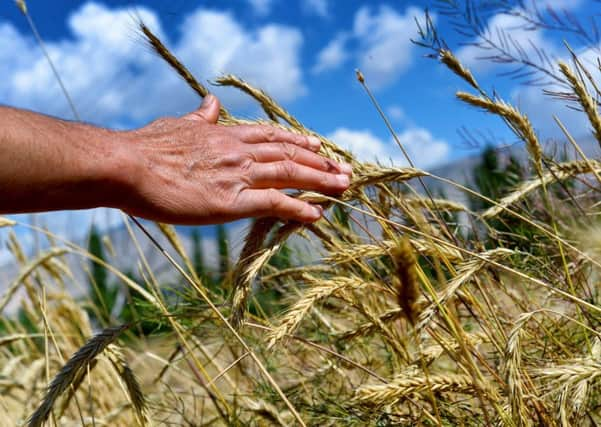Graeme Sait: Regeneration of soils offers a win-win for farmers and the planet


Humus is the glue that determines whether rivers run brown after rain or if dust storms strip the thin veil of topsoil that sustains us all. We have lost two thirds of the planet’s humus in just ten decades due to industrial, extractive agriculture, and this loss has generated something even more serious than soil instability.
The carbon has moved from the soil into the atmosphere as part of the carbon cycle. This represents a massive addition of CO2 to the thickening blanket that traps heat and over-warms the earth. In fact, mismanagement of our soils has provided almost double the CO2 contribution of industry, coal-fired power and motor vehicles combined.
Advertisement
Hide AdAdvertisement
Hide AdThe ongoing decrease in topsoil has had a huge negative impact beyond global heating. Recent research has revealed that if we maintain our current rate of loss (three to five tonnes an acre annually), we have just 60 years until zero remains. If you consider the challenge of feeding ten billion people with half the current levels of topsoil, it’s obvious we will hit the wall much sooner. So is it all over bar the shouting?
Good news – there is an answer and it offers wins on multiple levels. It is essential we understand the carbon cycle to grasp the potential of this planet-saving strategy.
We cannot make new carbon. There remains the same number of carbon molecules that have been here since the birth of our world. It is stored in soil, in carbon-based life forms or in the atmosphere as CO2, and it constantly cycles between these three.
The largest store is the soil, where stable carbon is retained as humus for over 35 years. If we could build rather than lose humus in farmland and gardens we would be capturing carbon that otherwise would cycle to the atmosphere.
An increase in organic matter in farmed soils of just one per cent represents sequestration of more than half of our yearly CO2 emissions – more than enough to reverse global warming.
We are what we eat, and what we eat comes from soils that are a shadow of their former selves. A combination of over-cultivation, heavy machinery compaction, acid and salt fertilisers, crop removal and farm chemicals have compromised soil nutrition and biology. UK figures reveal farmers are now applying more fertilisers and chemicals each year for less response. This is the very definition of unsustainable, and it is time for a productive change.
Scotland is uniquely placed to benefit from a move toward regenerative agriculture. Despite a steady decline in organic matter over recent decades, Scottish soils still contain more humus than in many regions of the world. There is a base level of fertility still present, where strategic sustainability initiatives could prove game-changers for food producers. The goal here is to produce food with forgotten flavours, extended shelf-life, less chemicals and greater nutrient density.
Europe is crying out for better, cleaner food and Scotland is perfectly positioned to make the most of that. Farmers can reclaim their profitability and satisfaction while helping to counter climate change in the process.
Australian soil expert Graeme Sait is presenting a seminar, Soil Health and Your Wealth, in Dundee on 15 and 16 November